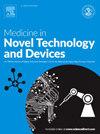非侵入性脑机接口的历史、现状和未来可能性
Q3 Medicine
引用次数: 0
摘要
本研究探讨了脑机接口(bci)的历史和现状,重点是无创的、基于脑电图的设备。脑机接口已经从神经生理学的早期研究发展到将大脑脉冲转换为可执行命令的现实应用。本研究讨论了脑机接口的两大类:侵入性和非侵入性,并强调了它们的优点和局限性。有创脑机接口信号准确,但存在较高的风险和伦理问题;无创脑机接口安全,但面临信号恶化和外界噪声的挑战。该研究还通过分析非侵入性接口的现有能力、限制和潜在的未来发展,评估了其更广泛使用和可用性的潜力。解决方案,以克服技术和道德挑战,探索提高可用性,用户体验,并在诸如医疗保健,康复,娱乐和认知增强等领域的影响。本文章由计算机程序翻译,如有差异,请以英文原文为准。
The history, current state and future possibilities of the non-invasive brain computer interfaces
This study explores the history and current state of Brain-Computer Interfaces (BCIs), focusing on non-invasive, EEG-based devices. BCIs have evolved from early studies in neurophysiology to real-world applications that convert brain impulses into executable commands. The study discusses the two main categories of BCIs: invasive and non-invasive, highlighting their benefits and limitations. Invasive BCIs provide precise signals but carry higher risks and ethical concerns, while non-invasive BCIs are safer but face challenges with signal deterioration and external noise. The study also evaluates the potential of wider use and availability of non-invasive interfaces by analysing their existing capabilities, limits, and potential future developments. Solutions to overcome technological and ethical challenges are explored to improve usability, user experience, and impact in areas such as healthcare, rehabilitation, entertainment, and cognitive enhancement.
求助全文
通过发布文献求助,成功后即可免费获取论文全文。
去求助
来源期刊

Medicine in Novel Technology and Devices
Medicine-Medicine (miscellaneous)
CiteScore
3.00
自引率
0.00%
发文量
74
审稿时长
64 days
 求助内容:
求助内容: 应助结果提醒方式:
应助结果提醒方式:


